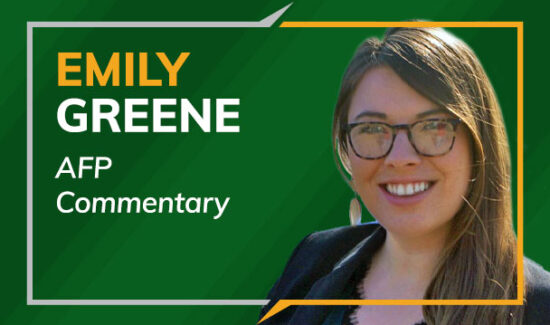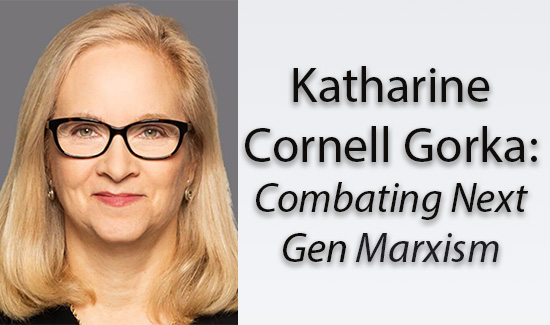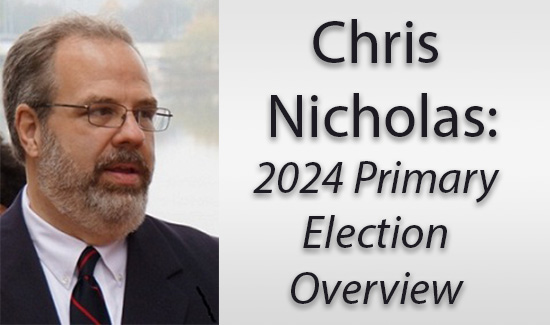Public Sector Pay Study Misses Mark
Policy Brief (Volume 11, Number 44)
Public Sector Pay Study Completely Misses the Mark
(August 29, 2011) – A study just released jointly by the Keystone
Research Center and the Economic Policy Institute (Public Versus
Private Employee Costs in Pennsylvania: Comparing Apples to Apples)
comparing Pennsylvania’s public employee pay to private sector job
pay is a prime example of analytical speciousness and ideological
bias.
Quoting the report’s key finding: "When compared on an annual basis,
full time state and local public employees in Pennsylvania earn 5.4
percent less than private sector workers–a statistically significant
difference." The report also asserts that college educated government
workers earn 21 percent less than private sector employees. The
implicit assumption of the report is that all high school grads,
those with bachelor’s degrees, master’s degrees, etc., with similar
years of experience should earn the same compensation as all other
workers having the same level of education. Thus, from that
fallacious assumption the author is able to reach the conclusion
that, because college educated public sector employees make less than
private sector college grads on average, it follows that government
workers are underpaid relative to the private employees.
This conclusion, based as it is on inappropriate–and
misleading–broad averages rather than comparisons of specific jobs
and skill level requirements, is useless as far as understanding the
true relative pay scales between the public and private sectors. Bear
in mind that many of the highest paid private sector jobs are not
performed to any great extent in the public sector so lumping all
employees’ earnings together creates a distorted view that helps
support the specious claims made in the report. Unfortunately for the
author of the study, in contradiction to the implied promise in the
title, the study does everything but compare apples to apples by
using a methodology that does the exact opposite.
The report claims to depart from most other comparative studies of
compensation by controlling for factors such as education, which, if
left unaccounted for explains why public sector workers make more
than private sector workers. But as we shall show, the study’s effort
to "control" for education in pay levels between public and private
workers demonstrates a serious lack of analytical acumen.
The study also purports to control for demographic variables
including age, gender, race, experience, ethnicity, citizenship and
disability. However, the report does not show or explain how that
analysis was carried out. Finally, the study attempts to take into
account organization size, noting that large private enterprises
typically pay more as well as offer more generous benefits. But again
there is no explanation of how or by how much this factor affects the
comparison of public versus private worker compensation.
Before returning to an in-depth discussion of the fallacies involved
with the "control" for education, a couple of claims made by the
report’s "fact sheet" cry out for comment. First, "With regard to
consistency with American values and from a productivity point of
view, public sector compensation is a model for the private sector,
not the reverse."
This is incredibly telling about the researcher’s ideological bias.
When did the pay of people working for the government become the
model for pay in the private sector? Who pays the taxes to support
whom? And if government chooses to overpay for the work product of
its employees, does that mean private, profit seeking enterprises
must do the same? In such a world, profits will be much lower;
investment and hiring by employers will go down and real wages
depressed.
Moreover, virtually the entire product of the government sector is
some form of service. Services for which supply and demand are
politically determined as opposed to market driven. Thus the value of
the services being "produced" cannot be determined in any meaningful
economic sense unless they are provided on a fee for service basis.
And there are few of those.
Continuing the fact sheet quotes: "Since overall pay plus benefits in
the Pennsylvania public sector is comparable or slightly lower than
in the private sector, state and local governments can’t cut spending
significantly by slashing public sector pay and
benefits…College-educated workers–the bulk of the public
payroll–are already substantially undercompensated; therefore any
cuts in benefits would need to be combined with offsetting salary
increases that make it possible to retain and attract high-quality
workers."
How preposterous. The writer is saying that government cannot ask
employees to take pay cuts, especially the college educated, because
they would leave and would not be replaceable at the lower
compensation level. In an environment with high unemployment across
the country, the most likely result would be that many qualified
applicants would show up for each and every government job opening
created by a resignation due to unwillingness to accept any
compensation reduction. Such illogical thinking is one of the prime
reasons government gets so bloated and expensive. And it points
directly to the real purpose of the report, i.e., to assist
government workers in their efforts to answer requests by officials
to take voluntary wage and benefit cuts and to fight any mandated
cuts.
Now to the meat of the report’s methodology. The report claims that
by looking at the education, work experience, gender, race, etc. of
public workers compared to private workers a better comparison of pay
in the two sectors can be obtained. Obviously education and
experience can exert some influence on pay, but in the real world pay
has to be tied to productivity and profitability of enterprises and
the contribution of each worker to that productivity. The job
specific skills brought by each worker are far more relevant than the
number of years of education or degree held by the employee.
More importantly, the study makes the inexcusable mistake of not
distinguishing between the types (academic fields) of bachelor’s
degrees, master’s degrees, professional degrees and doctorates in
evaluating education’s contribution to employee compensation. The
report makes a central point of the fact that 53 percent of
Pennsylvania government employees have a bachelor’s degree or higher
while only 32 percent of private sector employees have a bachelor’s
degree or higher. The implication is that public sector workers on
average ought to make more than the private sector. But as the
study’s data show, that is not the case. Master’s degree holders who
work for the state and local governments actually are paid
substantially less (about 30 percent) than employees of private
companies.
And since the greatest difference in private and public sector
employment shares by education levels is for master’s degree holders
(21 percent of government workers, 7 percent private), the study’s
research methodology leads to the unavoidable but terribly misleading
conclusion that private sector workers earn more than public sector
workers with no reference to jobs actually performed. For that
conclusion to be accurate or meaningful several things have to be
true. First, the degree field and quality mix must be the same in the
private and public sector. Second, the jobs must be very similar
between the private and public sectors. Third, the job skills
requirements must be the same and the workers must be comparably
motivated and fourth, value of product per worker should be similar.
There is almost zero probability these conditions are being met.
As noted earlier, the major difference in the percentages of the
college educated category by sector is in the master’s degree group
where 21 percent of government workers hold the degree while only 7
percent of employees on private payrolls hold a master’s degree. This
gap is undoubtedly caused by the large numbers of teachers and other
education employees on the public payrolls. Of the roughly 590,000
state and local government employees, 245,000 are in education where
master’s degrees are very common.
As mentioned, there is no discussion of the differences in academic
disciplines of the degrees awarded to government and private sector
employees. Degrees in petroleum engineering typically earn more than
degrees in history or sociology. Therefore, simply using numbers of
employees with bachelor’s and master’s degrees and implicitly
arguing they should be paid the same as all other bachelor’s and
master’s degrees is about as far from rigorous analysis as one can
get.
In short, the entire approach used by the study is fatally flawed.
Using education and demographic variables as the criteria to evaluate
relative compensation of government and private employees entirely
misses the point. The correct methodology is to look at specific jobs
performed in both the public and private sector to see how much the
employees in each sector are paid. For example, look at the pay of
public transit drivers compared to intercity bus drivers. Transit
drivers in Pittsburgh win hands down. Or look at compensation of
teachers in public schools compared to teacher pay in private or
parochial schools. The gap in favor of public teachers is enormous.
And that is how to gauge relative pay scales correctly. Too bad the
EPI chose to waste so much time and effort with their latest study.
Jake Haulk, Ph.D., President
For more on this topic click here –
http://cts.vresp.com/c/?AlleghenyInstitutefo/b5689066ab/afe7546fc5/95e218d05e
Link to Allegheny Institute Website –
http://cts.vresp.com/c/?AlleghenyInstitutefo/b5689066ab/afe7546fc5/3bc097320a
Forward this Brief to a friend –
http://oi.vresp.com/f2af/v4/send_to_friend.html?ch=b5689066ab&lid=1628527517&ldh=afe7546fc5
Tel: (412) 440-0079
Fax: (412) 440-0085
Email: [email protected]
______________________________________________________________________
Click to view this email in a browser
http://hosted.verticalresponse.com/957737/b5689066ab/1628527517/afe7546fc5/
If you no longer wish to receive these emails, please reply to this
message with "Unsubscribe" in the subject line or simply click on the
following link:
http://cts.vresp.com/u?b5689066ab/afe7546fc5/mlpftw
______________________________________________________________________
Allegheny Institute for Public Policy sent this email free of charge
using VerticalResponse for Non-Profits. Non-Profits email free. You
email affordably.
Allegheny Institute for Public Policy
305 Mt. Lebanon Blvd. Ste #208
Pittsburgh, PA 15234
US






